I am trying to get out of the business of blogging about the coronavirus and move onto other subjects…but, it is kind of hard to ignore.
The nine countries with the highest number of reported cases is the United States, six European Countries, Brazil and India. These account for seven of the ten richest countries in the world. They are shown below, mostly in order of the number of cases (as of 9:32:58 AM EST): Johns Hopkins CSSE
First is the United States (population 330 million) with 1,853K cases and over 107K deaths. The United States now has the highest number of reported cases per capita of any of the “big nine.” This graph is of the number of cases over time, as are the rest.

Next is Brazil (population of 210 million) with 584K cases and over 32K deaths.

Third on the list is Russia (147 million) with 441K cases but only 5,376 deaths. There is some suspicion that the mortality figure is under-reported. That figure gives them a mortality rate of 1.22%. Right now the restrictions in Moscow are very limited (far more so than anyplace in the U.S.).

Fourth is the United Kingdom (68 million) with 281K cases and almost 40K deaths. The UK still has the highest number of deaths per capita of any of the “big nine,” but it does appear that they are bringing the number of cases down now. Still, this was an island nation that had warning after Italy and Spain were struck with the virus.

And:
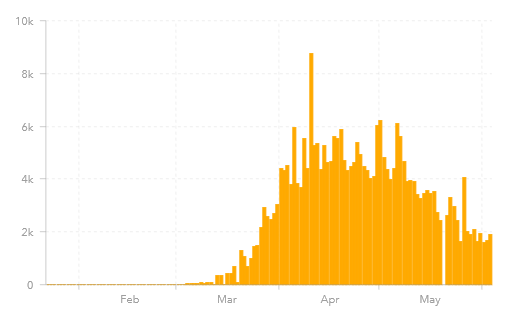
These four counties have two things in common, first their graphs are pretty much showing a straight line to hell, and second, in my opinion, they all have poorly handled the response to the Coronavirus. They certainly have when compared to the four countries below, all European. They all appear to have brought the virus under control.
Fifth on the list of cases is Spain (47 million) with 240K cases and 27K deaths.

Sixth on the list is Italy (60 million) with almost 234K cases and over 33K deaths. This was the first country in Europe to be seriously hit by the virus.
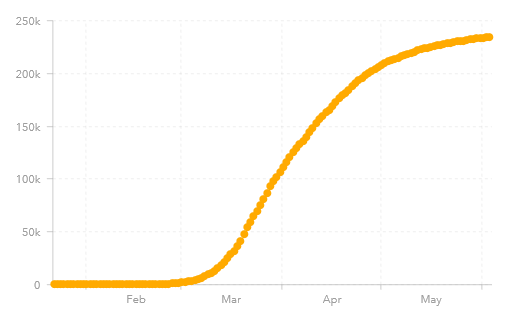
Eighth is France (67 million) with almost 189K cases and 29K deaths.
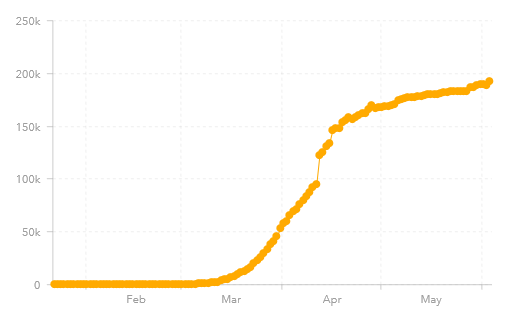
Ninth on the list is Germany (83 million) with over 184K cases and only 8,627 deaths. This is a morality rate of 4.68%, which is still high. Germany has certainly does the best job of all these countries in containing the virus. This is a country that is densely populated and mostly land borders. Their death figures may be unreported compared to other countries (for example Belgium) due to definitions of what constitutes a death due to coronavirus as opposed to other causes.

Also on the “big nine” list is India, now seventh on the list and unfortunately is going to rise much higher. They have a population of 1,363 million, with almost 218K cases but only 6,104 reported deaths. This is a mortality rate of 2.80%
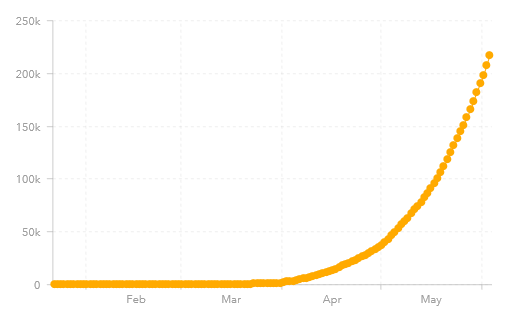
There are three other “western” countries of interest to me: Canada, Netherlands and Belgium:
Canada (38 million) has over 94K cases and only 7,579 deaths. Compared to the United States, it has 13% of the population, 5% of the cases and 7% of the deaths. Basically per capita, it infection and mortality rate is half compared to the United. U.S. mortality rate is 5.79%, strongly indicated that there are a lot more cases out there than we have not tested for. Canada’s mortality rate 8.00%, which means that they appear to have the same problem.

There is Belgium (11.5 million) with almost 59K cases and 9,548 deaths. This is more deaths than reported for Germany and the highest number of deaths per capita among these twelve countries. Part of the reason may be again reporting, with Belgium claiming to be very “honest” in their reporting. In the end, people are going to have to look at “excess deaths” since the beginning of this year to get a proper feel of what the real comparative death counts are.

Finally, there is the Netherlands (17.5 million) has 47K cases and 6,009 deaths.
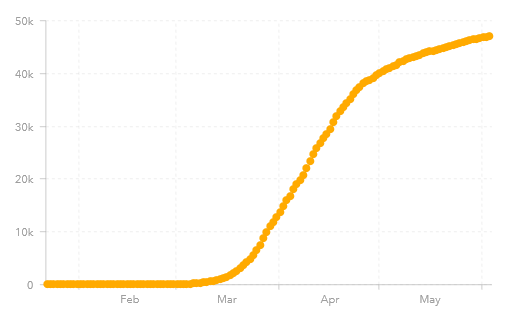
It does appear like Spain, Italy, France, Germany, Belgium and Holland are bringing the virus under control. Clearly the United States, Brazil, Russia, India and Canada have not. Hopefully, the United Kingdom is finally starting to.
